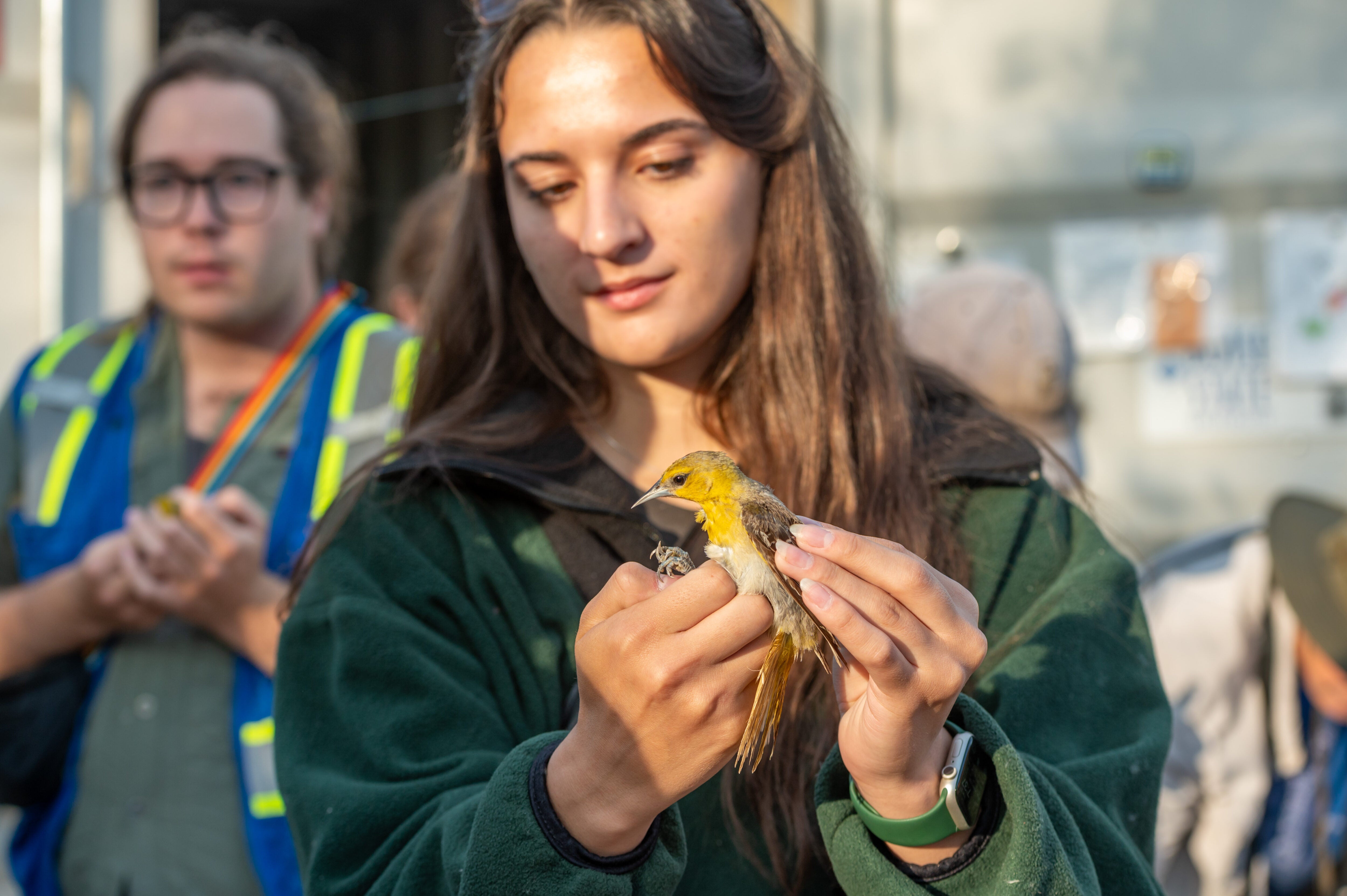
By Kara Killinger
If you’ve ever wanted to feel a hummingbird’s heartbeat or watch a songbird take flight from your palm, the Intermountain Bird Observatory’s bird banding events may be for you.
The observatory is a nonprofit research branch of Boise State whose mission is to combine bird research with outreach and education. This July, student trainees, volunteers and researchers worked together to band local songbird and hummingbird populations. Banding events for goshawks, falcons and owls are coming up later in the year.
Bird banding is a fun family event, where audiences watch science take place in real time. Data collected during bird banding also significantly contributes to international understanding of bird populations.
Birds in hand
Songbirds are captured using mist nets — thin, almost invisible mesh nets suspended between two poles. For hummingbirds, the capture method is what Heidi Ware Carlisle, education and outreach director for the Intermountain Bird Observatory, calls a “Tom and Jerry situation.” Nets are placed above birdfeeders and dropped over the hummingbird when it approaches to drink sugar water.
After initial capture, the birds are transported from net to banding table, where researchers hold the birds delicately. Songbirds’ small heads are positioned between the researcher’s pointer and middle finger. Hummingbirds, even more delicate, are wrapped in a fabric “burrito.”
From there, it’s time to examine each bird. Researchers fan out the birds’ feathers to determine the state of the plumage. They blow on the birds, which exposes the birds’ transparent skin, as well as the muscle and fat underneath. Researchers check for body condition, the presence of parasites, and breeding timing — whether a female has laid an egg recently.
Banding together
Researchers do their best to determine each bird’s age; however, this is more difficult than one might think. For hummingbirds and songbirds, baby feathers are easy to spot, but it’s impossible to tell whether a mature bird is two years old or 12. The exception? If a bird was banded two years ago as an active second-year, researchers can be certain it’s at least four years old now.
Banding is essential for research. The tiny aluminum rings placed around each bird’s ankle, each labeled with a unique number, allow for long-term tracking of birds’ health, breeding patterns and more.
“The best part of banding is recapturing, whether it’s a week later, whether it’s three years later,” explained Anna Connington, a graduate student in Boise State’s Master of Raptor Biology program and a volunteer for the Intermountain Bird Observatory. “We’ve caught birds 15 years after they were originally banded at the same site, which is exciting. I think they caught a hummingbird that was around 10 years old.”
The big picture
Data gathered from bird banding can help scientists make decisions about local conservation action and habitat restoration. But the data also contributes to bird research on a global scale.
The Intermountain Bird Observatory submits songbird banding data to the Institute for Bird Populations and hummingbird data to the Hummingbird Monitoring Network. By combining information from these sites scattered all across North, Central and South America, researchers are able to better understand bird populations.
“These birds only call Idaho home for a few months of the year, so to conserve and protect them in Boise, we need to know how they are doing during the rest of their annual cycle,” Carlisle said. “By combining our data with other scientists, we can track bird populations and understand their trends.”
Because bird banding is open to the public, it also serves the important purpose of connecting people to local habitats.
“People need to experience nature if they are going to care about it. And they need to care about it if they’re going to protect it,” Carlisle said. “The more kids and adults we can get to care about birds in nature, the better off we will all be.”